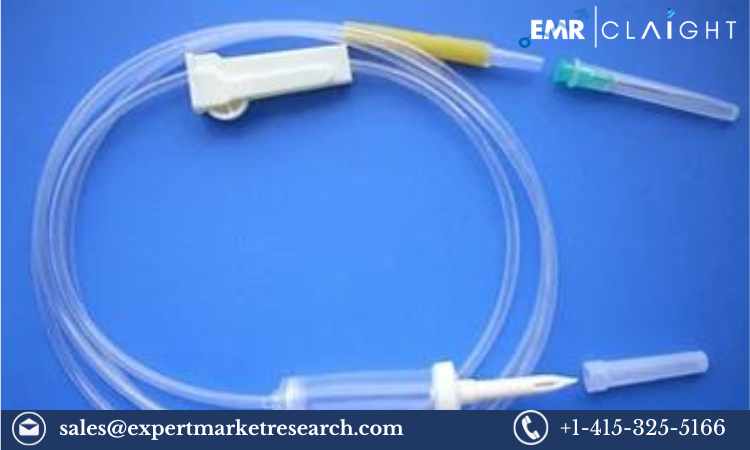Intravenous (IV) therapy is one of the most common methods for administering medications, fluids, and nutrients directly into a patient’s bloodstream. This essential healthcare component has become indispensable due to the increase in chronic illnesses like diabetes, cardiovascular disease, and cancer. As of 2023, the IV tubing sets and accessories market reached a value of USD 1.2 billion and is projected to grow at a CAGR of 4.6%, hitting approximately USD 1.8 billion by 2032.
- Purpose of IV Tubing Sets and Accessories: These products are critical in delivering timely and controlled medications or fluids and minimizing the risks of complications associated with intravenous therapy.
Why Is the IV Tubing Sets and Accessories Market Growing?
Several driving forces contribute to the growth of the IV tubing sets and accessories market:
- Rising Prevalence of Chronic Diseases: Conditions like heart disease, cancer, and diabetes often require long-term care and regular medication administration. This steady increase in chronic illnesses fuels the need for effective IV therapy tools.
- Advancements in IV Tubing Technology: New features, such as needle-free connectors, help prevent needle-stick injuries and reduce the risk of infections, making them a top choice for healthcare providers. In addition, innovations like antimicrobial coatings protect against bacterial contamination, supporting patient safety.
- Demand for Home Healthcare Solutions: There is a growing trend towards home-based healthcare, particularly for chronic illness management. Portable IV solutions allow patients to receive treatment at home, fostering convenience and reducing the need for hospital visits.
- Increased Focus on Infection Control: The COVID-19 pandemic highlighted the importance of infection prevention. As a result, healthcare providers are looking for IV tubing solutions that prioritize patient safety and minimize infection risks.
Key Trends in the IV Tubing Market
The IV tubing sets and accessories market is seeing several trends that are shaping its future direction:
- Needle-Free Connectors: These connectors help prevent accidental needle-stick injuries, which is especially important for healthcare workers who face such risks daily. They are also designed to reduce contamination, making IV therapy safer for patients.
- Eco-Friendly and Biodegradable Materials: As sustainability becomes a priority, some companies are developing biodegradable IV tubing materials to reduce waste in healthcare. This trend aligns with broader environmental goals and can improve brand image in environmentally conscious markets.
- Wearable and Portable IV Solutions: With an increase in demand for telemedicine and home-based care, the development of wearable IV technology is on the rise. These products provide patients with greater mobility and comfort, allowing them to receive treatment without being confined to a bed or chair.
- Integrated IV Pumps: Some IV tubing sets now come with integrated pumps that allow for better flow control and precise dosing, which is crucial for patients receiving potent medications or chemotherapy.
Market Segmentation Analysis
The IV tubing sets and accessories market can be broken down by product type, application, and geographical regions. Here’s an in-depth look at each segment:
- By Product Type:
- Primary IV Tubing Sets: These are typically used for continuous or intermittent fluid delivery and are the standard IV sets used in most healthcare settings.
- Secondary IV Tubing Sets: Often referred to as “piggyback” sets, these are used to administer a secondary medication intermittently alongside a primary infusion.
- Extension Sets: These are used to extend the reach of IV sets and are ideal for repositioning patients or providing additional tubing in complex setups.
- Specialized IV Administration Sets: These include sets specifically designed for applications such as chemotherapy or anesthesia, featuring additional safety features or precise dosing controls.
- By Application:
- Hospitals: Major users of IV tubing, hospitals rely on these sets for administering medications, fluids, and nutritional support.
- Clinics: Clinics often use IV tubing sets for outpatient procedures, such as hydration therapy and pain management.
- Home Healthcare Settings: As more patients opt for home-based treatment, the demand for user-friendly and portable IV tubing sets is growing.
- Other Medical Facilities: Ambulatory surgical centers and nursing homes also rely on IV tubing sets for various medical applications.
- By Region:
- North America: This region dominates the market due to the high prevalence of chronic diseases, advanced healthcare infrastructure, and increased adoption of new technologies.
- Europe: Similar to North America, Europe has a well-established healthcare system that supports the demand for advanced IV tubing solutions.
- Asia-Pacific: With growing healthcare expenditure, especially in China and India, Asia-Pacific represents a region with significant market growth potential.
- Latin America, Middle East, and Africa: These regions are emerging markets where healthcare investments are increasing, and the demand for effective medical solutions is on the rise.
Leading Companies in the Market
Several prominent companies play a significant role in the IV tubing sets and accessories market. Each of these companies brings unique innovations and strategic moves to the table:
- B.Braun Medical Inc.: Based in the United States, B.Braun is known for its infusion therapy solutions, including extension sets and specialized IV sets that incorporate safety features like back-check valves and needleless connectors.
- Baxter International Inc.: This company has a broad portfolio of IV tubing sets for various medical applications, such as primary, secondary, and extension sets. Baxter is committed to developing products that improve patient outcomes and ensure safe medication delivery.
- Becton, Dickinson and Company (BD): BD’s portfolio includes a variety of IV administration sets designed with patient safety in mind, such as their needle-free connectors and TIVA administration sets. BD has also focused on infection control through its products.
- Blickman: Although primarily known for medical furniture, Blickman offers IV poles and stands that support IV tubing sets in hospitals and clinics, playing a key role in enhancing healthcare facility efficiency.
- Other Notable Players: Cardinal Health, ICU Medical Inc., EQUASHIELD, and Vygon Group contribute to the market with innovations in IV tubing sets and accessories, focusing on safety, durability, and ease of use.
Key Strategic Initiatives and Investments
Top players in the market have made strategic moves to strengthen their positions. This includes partnerships, product launches, and acquisitions:
- Acquisitions: For instance, Baxter’s acquisition of Hillrom expanded its infusion therapy offerings, allowing the company to reach a broader market with integrated medical solutions.
- Product Innovation: BD’s focus on needle-free technology aligns with its goal of reducing infection risks, a feature in high demand in today’s healthcare environment.
- Investments in R&D: Companies like B.Braun are investing heavily in R&D to bring new products to market that meet the demands for safety and reliability, such as antimicrobial-coated IV tubing and tubing that can be used in complex medical applications like chemotherapy.
Future Growth Opportunities and Challenges
The IV Tubing Sets and Accessories Market has a positive outlook with several opportunities and challenges:
- Opportunities:
- Home Healthcare Market Expansion: As demand for at-home treatment rises, companies have the opportunity to innovate in portable and user-friendly IV tubing sets.
- Sustainable Product Demand: There’s a growing preference for eco-friendly medical supplies, giving companies a chance to differentiate themselves with sustainable IV products.
- Expansion in Emerging Economies: The Asia-Pacific region, in particular, holds immense potential for growth as healthcare infrastructure improves and access to medical treatments increases.
- Challenges:
- Regulatory Compliance: The need to meet stringent safety and quality standards can slow down new product development.
- Infection Risks and Complications: Companies must continue to innovate to address infection control, especially in light of increased awareness post-COVID-19.
- Alternative Treatment Methods: Advances in drug delivery technology, like oral and injectable methods, may limit IV therapy use, impacting demand for IV tubing sets.




